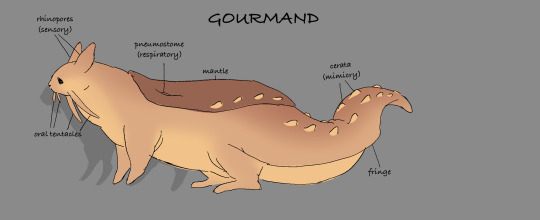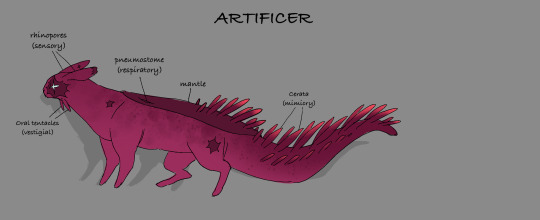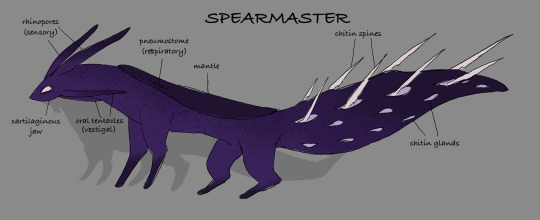#Enzyme Processing
Explore tagged Tumblr posts
Text
Membrane Maintenance Tips for Long-Lasting Enzyme Processing
If you rely on enzyme processing, you know how important membranes are for efficient filtration. But like any equipment, they need proper care to perform well over time. Here are some easy maintenance tips to keep them working smoothly:
Clean Regularly – Over time, residues can build up and clog membranes. Regular cleaning with the right solutions helps prevent this and keeps things running efficiently.
Watch the Pressure and Flow – If you notice sudden drops in pressure or irregular flow, it might mean your membranes are getting clogged or worn out. Catching these early can save you from bigger problems.
Be Careful with Chemicals – Not all cleaning agents are membrane-friendly. Using the wrong ones can cause damage, so always check compatibility before use.
Prevent Build-Up – Scaling and biofouling can reduce membrane efficiency. Using anti-scalants or biocides when needed can help keep them clean and effective.
Inspect Regularly – Small cracks, leaks, or wear might not seem like a big deal at first, but they can lead to costly replacements if ignored. A quick routine check can go a long way.
With proper care, your membranes will last longer, keeping your enzyme processing system efficient and cost-effective.
1 note
·
View note
Text
went up on my pristiq like 2 weeks ago bc i found it wasnt really doing much for me anymore and i was about to give up hope of this med working for me again last night when taking it
but i woke up today feeling stable and present. birds singing a butterfly spreading its wings etc etc yayyyyyyy
#the fog has receded#now hopefully it doesnt just like stop doing its job in a few months#my curse is that i go thru this awful gruelling process of finding meds that work for me#and then they crap out completely within a year or two#i'd get that genetic testing for medications and what i absorb better or whatever. smth to do with liver enzymes#but its a $600 test not covered by insurance. lol#and its not guaranteed to be accurate bc it doesnt take all working parts into consideration ofc. lots of brain stuff is involved in#processing psych meds and how they affect you#💭
8 notes
·
View notes
Text
life in shambles brain a puddle of useless dysfunctions BUT my doctor friend told me that i have an immaculate liver and pancreas :]
#ramblings#at least i can drink and eat fried foods forever and ever#obviously she has not looked directly at my pancreas but we were talking about how quickly i get low blood sugar#and she was explaining insulin to me and i was like POWERFUL PANCREAS (this is the only thing i know about pancreassies)#apparently it has a lot to do with breaking down fats?#the liver thing came up tangentially and she said im a fortunate soul blessed with strong alcohol-dihydrogenase enzyme#and i dunno why that pleases me so but ive been smug about it since. i won at liver :]#anyways now im thinking about livers and i realized i havent eaten liver since i was 14 and i hated it#but like twas long ago and my tastes have developed a lot and im of a mindset that no part of an animal should go to waste#so i need to eat some livers now i need to experience it anew#also i looked up how to prepare it and apparently one popular way is liver pate and my exact thought process was#“oh cool ive always wanted to know what its like to eat cat food”#so now i gotta figure out where one aquires livers#genuinely i do not think ive ever purchased a meats before. where is the meat store
14 notes
·
View notes
Text

New technique uses enzymes to create versatile nanoparticles
The selective bond-breaking powers of enzymes bring new versatility for building nanoparticles with a wide range of technical and medical potential. Researchers at Hokkaido University have developed a new and more adaptable method for creating nanoparticles of finely controlled size. Their 'bio-catalytic nanoparticle shaping' (BNS) procedure, published in the journal Nanoscale Horizons, should greatly assist the production of a variety of nanoparticles for use in technology and medicine. "One of the most promising applications is for creating assemblies of nanoparticles called quantum dots, which are small enough for their properties to be influenced by subtle quantum mechanical effects," says Associate Professor Yuta Takano, the leader of the Hokkaido team. Takano and colleagues collaborated on the work with researchers at the University of Melbourne in Australia.
Read more.
#Materials Science#Science#Nanoparticles#Nanotechnology#Enzymes#Materials processing#Hokkaido University
9 notes
·
View notes
Text
I don't get how the fuck GAP turns into glucose AND EVERYTHING I FIND GETS MORE CONFUSING
(yes, this is about photosynthesis)
#Imma fail this presentation SPECTACULARLY#Like it's got phosphate on it right? How did the phosphate get removed???#There's always SOME special process to this BUT I DON'T FIND SHIT#Is it through enzymes.?? Magic???? Does it just... HAPPEN??????#Bruh why did I chose biology again#If only art was a sustainable way of living I'd be doing that instead
11 notes
·
View notes
Text
"donna something's inhibiting my enzymes"
#i forgot how funny this scene is but also being in the middle of a fic where 13 gets poisoned#makes it even more fun#the difference between 10 doing..........this#and 13 going 'huh guess i'll die' fgkjghjgh#ALSO love that i put a kiss-but-not in my fic too love when your subconscious does that#also also the fact that like 90% of a timelords physiological processes can be at least partially consciously controlled#bullshit nonsense that i lov e<3#'nooo my enzymes'
7 notes
·
View notes
Text
From Elements to Enzymes: Mind-Blowing Human Body Chemistry Facts
The human body is a miraculous blend of biology and chemistry. Beneath the surface of our skin lies a vast universe of chemical elements and compounds constantly reacting, regenerating, and renewing life. From the tiniest atoms to complex enzymatic reactions, the chemistry within us shapes how we live, breathe, think, and feel. In this article, we’re diving deep into mind-blowing human body…
#Biochemical processes in the human body#Chemical reactions in the human body#Enzymes and hormones functions in the body#Interesting facts about body chemistry#Mind-blowing human body chemistry facts#Role of elements in human biology
0 notes
Link
1 note
·
View note
Text
"A German bio-tech company has developed a naturally-occurring enzyme discovered in a cemetery into a near-market ready solution for recycling plastic without any loss of quality.
In 2022, GNN reported on a paper published by Leipzig-based scientists who first identified the enzyme. At the time, the enzyme was subject to a small side-by-side test, and caused the polyethylene terephthalate (PET) plastic to decompose by a whopping 90%.

Pictured: Before and After: A container of PET after 24 hours of contact with the enzyme leaves only dye
Fast forward to the spring of 2025 and those same scientists have perfected the capabilities of that enzyme, called PHL7, and have founded ESTER Biotech to bring those capabilities to market.
Their initial plan to be finished next year is a bathtub-sized pilot project reactor. If successful, their 2030 plan will be four 350 cubic-meter reactors capable of processing 45,000 metric tons of PET plastic every year.
PHL7 and ESTER Biotech boast several advantages over chemical and thermal recycling methods. For starters, once the polymers of PET are broken by the enzyme into monomers, or single component parts, they have suffered no degradation of their material characteristics unlike some recycled plastic which is weaker or less stable.
Additionally, PHL7 is exceptionally stable from 32 to 203 degrees Fahrenheit (0-95°C), and per kilogram of plastic, a dose of only 0.02% to 0.06% of the enzyme is required—substantially less than existing alternatives. Their new version of the enzyme also recycles the plastic several hours faster.
“Our technology makes it possible to bring material flows that are currently burned back to the beginning of the cycle at the molecular level,” says Christian Sonnendecker, lead author on the paper of the enzyme’s discovery, and co-founder of ESTER Biotech at the University of Leipzig. “And with high energy efficiency and scalability.”
“We are only at the beginning. But we are convinced that when science, entrepreneurial spirit and social responsibility come together, a cemetery enzyme can become a beacon of hope for a better future.”
RECYCLING BREAKTHROUGHS:
Scientists in Japan Develop Non-Toxic Plastic That Dissolves in Seawater Within Hours
Cornell Researchers Create First-of-its-Kind Durable and Recyclable Plastic
New Process ‘Vaporizes’ Plastic Bags and Bottles to Help Make Recycled Materials
Revolutionary New ‘Living Plastic’ That Could Slash Damage to the Environment Developed by California Researchers
ESTER Biotech’s enzyme is able to separate certain multilayer composites which are normally thought of as unrecyclable. In addition to the infrastructure of the pilot project, ESTER is currently working with two medium-sized partners to build a cost-efficient supply chain with an aim to reduce the enzyme price to between 100 and 200 euros per kilogram.
Though no currently-commercialized recycling method can compete with the cost of virgin plastic, a price between 100 and 200 euros will put it in line with existing competitors.
Fortunately for anyone in the space, the EU is not afraid to use heavy-handed regulation to guarantee plastic recycling rates. By 2040, under existing EU legislation, 65% of plastic production will be mandated to come from recycled sources. ESTER believes that with its potential to offer a higher quality “recyclate,” the incentive to pursue and expand enzymatic methods will increase."
-via Good News Network, June 13, 2025
#recycling#plastic#plastic pollution#environmental science#enzyme#waste#waste management#plastic recycling#germany#eu#europe#good news#hope
2K notes
·
View notes
Text

Boosting PET recycling with higher standards for laboratory experiments
Many enzymes promise to break down plastic. But what works in the lab often fails on a large scale. Now a new study by Gert Weber, HZB, Uwe Bornscheuer, University of Greifswald, and Alain Marty, Chief Scientific Officer of Carbios, shows how raising the bar for laboratory experiments could help identify promising approaches more quickly. The team demonstrated the new standards on four newly discovered enzymes. From time to time, the media reports major advances in the recycling of polyethylene terephthalate (PET), thanks to newly discovered enzymes that break down the plastic into its constituent parts. However, the first success story from the academic laboratory is usually followed by silence. PET accounts for 18% of the world's plastic production, making it one of the most important plastics in terms of volume. The biotech company Carbios, for example, plans to build a plant in the northeast of France by 2025, that can recycle 50,000 metric tons of PET per year. They are interested in finding the best possible enzymes for their industrial setup and have realized that many results from laboratory research cannot be transferred to a larger scale.
Read more.
#Materials Science#Science#Polyethylene terephthalate#Polymers#Plastics#Recycling#Enzymes#Materials processing
5 notes
·
View notes
Text
rainworld slugs! :V I put way too much thought into this










other notes under cut cause I thought about it a lot
their skeleton isn’t normal bone, it’s actually a mix of normal and prismatic cartilage! this keeps their bones light and flexible while still giving them the ability to tightly grasp and bite things. they all have prismatic cartilage for their jaws except for spearmaster, which discourages them to eat using their mouth since it’s extremely time consuming and uncomfortable given that their diet otherwise isn’t intended to be small plant particles and plankton.
spearmasters spines/spears from its tail are also full of digestive enzymes. this won’t kill prey by itself, but once downed spearmaster can just chillax as the enzymes do their thing inside the body and the visceral mush is returned to spearmasters digestive system for processing.
all of them have some sort of internal shell in their mantle except for saint. Rivulets is vestigal and very thin to allow for more complex movement but they do still have it. In the evolutionary timeline of scug—>furred scug, at some point it became more efficient to develop thick, dense fur that could deal with the cold while simultaneously protecting them. saints pneumatostome is also almost entirely gone and is more just an unusually soft spot on their back.
I interpret artificer, gourmand, and watcher to be apart of a “future” generation of scugs far beyond survivor, hunter, and monk—though obviously not as far into the future as saint is. they developed cerata to mimic lizards, since a lot of organisms will think twice before messing with a lizard rather than a slugcat, which is (typically) much less deadly.
hunter, artificer, and spearmaster are all malnourished, which isn’t super noticeable in the way I drew them but I’d just like to point it out cause it’s important 2 me lol.
#rain world#rw survivor#rw monk#rw hunter#rw gourmand#rw rivulet#rw artificer#rw spearmaster#rw saint#rw watcher#rw headcanons#YAAAAAAAYYYYYYYYYY!!!!!!!!!!#doodleposting#rw slugcat
2K notes
·
View notes
Text
The dozens of variations discovered in hemoglobins, metabolic processes, and, in the structures, enzymes made it evident that human beings were infinitely differentiable in their biochemistry. No stigma could be attached to the impersonal substitution of a single amino acid that produced sickle-cell anemia.
"In the Name of Eugenics: Genetics and the Uses of Human Heredity" - Daniel J. Kevles
#book quotes#in the name of eugenics#daniel j kevles#nonfiction#variation#idic#hemoglobin#metabolic process#60s#1960s#20th century#enzymes#differentiable#biochemistry#stigma#impersonal#substitution#amino acid#sickle cell anemia#sickle cell disease
0 notes
Text
Something I feel complicated and a bit guilty about as a person with a fairly covert disability is my reactions to seeing people with physical disabilities or mobility aids.
Because my first instinct is to stare. I can usually catch myself (though not always, thank you ADHD) and I’m aware that it’s probably something that makes that person uncomfortable.
But I’m not staring from disgust, or pity, or horror, but from genuine curiosity. Like if I saw someone missing their left hand, my brain starts running down the rabbit hole of “Were they born with that, or is it an injury? Hmm, no scar tissue, probably born with it. What kinds of mobility aids do they need, if any? Has that otherwise affected their nervous system?” Etc etc.
Which is arguably its own form of objectification, seeing someone’s disability as a puzzle to be solved.
I don’t know, I guess it just feels complicated to me. I want to understand the world around me and the people in it and there isn’t always time or it isn’t always respectful to engage in those kinds of discussions. So sometimes I look a little longer than maybe I should.
#I’m not gonna tag this bc that just kinda feels like opening the door for shit#mostly just processing here#I want to understand#I also want to be respectful and kind#it frustrates me to no end that those aren’t always compatible#but I do my best to chose the latter when I have to chose#also processing a bit that just because my disabilities don’t affect my mobility for the most part#doesn’t mean my disability isn’t physics#my neurons and hormones don’t work how they’re supposed to#my body doesn’t produce the right enzymes or react to certain hormones#my body can’t regulate its own hormones well and that fucks up my uterus and causes weight gain#but people not being able to see that at a glance gives me more privileges than disadvantages#at least most of the time
0 notes
Text
Food and Beverage Processing Enzyme Market Forecast 2024 to 2032
Food and beverage processing enzymes are natural proteins that play a vital role in catalyzing biochemical reactions during the production of various food and beverage products. They are used as biocatalysts to break down complex compounds into simpler forms, thereby improving processing efficiency, enhancing product quality, and optimizing flavors and textures.
Food and Beverage Processing Enzyme Market was valued at USD 1513 Million in 2022 and is expected to register a CAGR of 2.08% by 2032.
Key factors in the food and beverage processing enzyme market include the demand for improved processing efficiency and product quality, the need for natural and sustainable food production methods, and the pursuit of innovative ingredient solutions. Enzymes' role in enhancing nutritional profiles, optimizing texture and taste, and reducing processing time contribute to their significance.
Get A Free Sample
0 notes
Text
Revolutionize Your Paper Production With Top-Notch Pulp and Paper Equipment!

Discover a World of Efficiency and Quality at Balaji Chem Solutions. Are you in the paper manufacturing industry and looking to upgrade your equipment to boost productivity and reduce costs? Look no further! Balaji Chem Solutions presents an exclusive range of cutting-edge pulp and paper equipment designed to elevate your production process to new heights. From pulping machines to paper forming equipment, our advanced technology ensures seamless operations, higher throughput, and superior paper quality. Don't miss this opportunity to optimize your production line and stay ahead in the competitive market. Explore our wide selection of reliable pulp and paper equipment today!
#paper packaging board#recycled paper pulping process#waste paper recycling process#pulp and paper equipment#types of paper machines#chemicals used in sizing#raw material used for making tissue paper#paper board packaging material#pulp mill equipment#paper pulp making machine#application of industrial enzymes#paper pulp machine manufacturers#paper recycling process step by step#how is paper recycled step by step#Surface Sizing Agents#sizing agents#Cationic surface sizing#Internal sizing agents#Surface Sizing Chemicals
0 notes
Text


Hydras are a highly elusive drake found primarily deep within cave systems.
Known across the globe for their multi venomous heads the true nature of the Hydra is a bit more complex.
Much of it’s life the hydra will live solitarily, and living within labyrinthian cave systems makes that quite easy. Males and Females of the species are quite dimorphic, rarely coming across one another. However it is upon maturity the the Hydra will undergo it’s task of metamorphism. The multi headed dragon of legend is in fact a bonded and mated pair. Females develop a bioluminescent lure, that both attracts prey but also a potential mate. Upon finding a suitable sire, the male will adhere to his mate’s back. This process is not immediate and full adhesion will take years to complete. An enzyme is released from his underbelly allowing for the fusing process. However females have a counter enzyme allowing for females to reject potential males should better stock be found. Upon full adhesion the males body nearly fully absorbs into his mate, even their brain chemistry will intertwine. His wings, however, will remain fully functional and as such will allow for the pair to venture beyond the cave for greater feeding opportunity. Why most hydra are double headed, there are cases where multiple males will adhere to a single female. The most dominate male remaining most intact. This typically only happens to larger more dominant females.
Other dragon species have following a similar convergent evolution such as the False Hydra. Male False Hydra possess a suction cup appendage on their underbelly comprised of highly modified ventral scales and females have the responding on their back. However this bond is not permanent and separation is capable.
#concept art#creature design#creature concept#fantasy art#concept design#fantasy#monster#dragons#speculative biology#creatureconcept#creaturedesign#dragon#smaugust2024#digitalart#fantasyart#illustration#mythology#reptiles#lizard#monstergram#bestiary#worldbuilding#dungeonsanddragons#magicthegathering#hydra#digital
2K notes
·
View notes